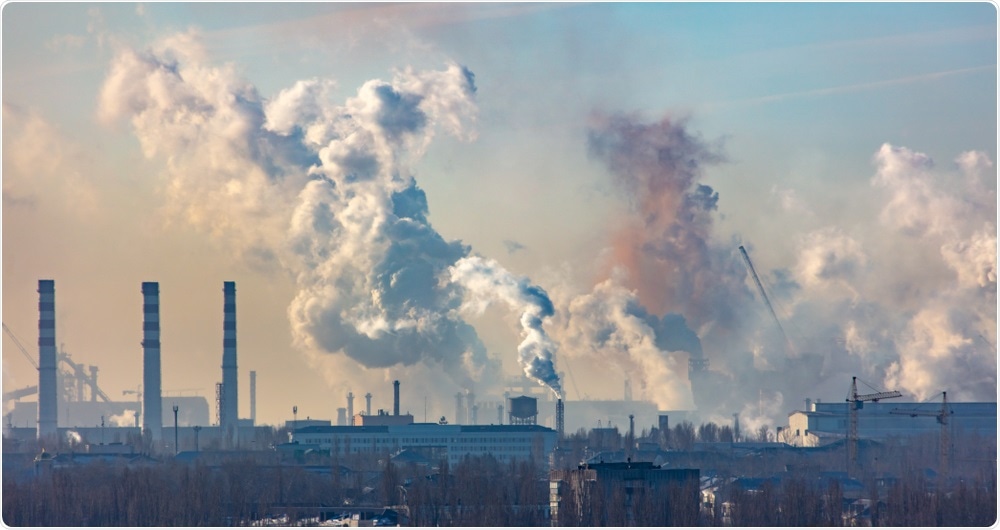An international team of researchers is calling for a large-scale effort to map the health effects of cumulative exposure to environmental components such as chemical pollutants.

Image Credit: Schankz/Shutterstock.com
Referred to as “the exposome,” the authors say a more complete picture of this exposure is needed for a better understanding on how it impacts on human health.
Over the last twenty years, the field of genomics has revolutionized scientists’ understanding of the genetic risk factors involved in human disease risk. However, it has also been transformative in revealing how genetic determinants are only a small part of the bigger picture, accounting for just a fraction of people’s overall disease risk.
“A coordinated and international effort” is needed
Now, a review article from researchers at Columbia University Mailman School of Public Health; Northeastern University; Utrecht University, the Netherlands and University of Luxembourg is calling for a large-scale effort - similar to the that of the Human Genome Project - to map the human exposome and provide a more comprehensive picture of its impact on human health. The article was recently published in the journal Science.
Our genes are not our destiny, nor do they provide a complete picture of our risk for disease…Our health is also shaped by what we eat and do, our experiences, and where we live and work."
Gary Miller
First author, Roel Vermeulen, says that, currently, less than half of the nongenetic disease risk is accounted for. This suggests the existence of environmental risk factors… and exposure to those may be largely preventable.
Given the growing recognition of the important role that nongenetic factors play in disease risk, Vermeulen thinks that a coordinated and international effort is needed to characterize the exposome at a scale comparable to that of the human genome.
More about the exposome
The concept of the exposome was first proposed by scientist Christopher Wild in 2005 as a way of representing the non-genetic, environmental factors involved in health and disease states.
These factors are not limited to the hundreds of thousands of chemicals that enter our bodies through the air we breathe or the food and water we consume. They also include the body's response to exposures ranging from the built environment and social circumstances, through to bodily processes such as inflammation, oxidative stress, infection, and gut flora activity.
Current research approaches fail to address the chemical complexity of our world
"Current research approaches and regulatory policies fail to address the chemical complexity of our world," said Vermeulen and team.
Traditionally, researchers’ understanding of how chemicals in the environment might affect human health has been based on studies examining one or a small number of pollutants at a time.
"However, our exposures are not a simple sum of a handful of chemicals," write the authors. "A reductionist approach might isolate the role of a single variable, but it will inadequately capture the complexity of the exposome."
For a better understanding of the effects that environmental exposures have on human health, researchers are starting to conduct environment-wide association studies (EWAS) - the exposome equivalent of genome-wide association studies (GWAS).
Vermeulen and team say that gaining a better picture of the exposome’s impact on health not only involves understanding many daily chemical exposures, but also the complex ways that these interact with cells.
EWAS studies benefit from the use of high-resolution mass spectrometry for the measurement of small molecules such as air pollutants, plasticizers, and pesticides, as well as nutrients and biological metabolites.
Large-scale studies are needed, says the team
One challenge exposome researchers face is the relatively low sample size in studies of nongenetic environmental exposures. In genomic studies, sizes need to be more than 100,000 for researchers to make any significant ground in understanding the heritability involved in common chronic diseases. Vermeulen and colleagues propose that similar or even larger sample sizes are needed for exposome studies.
The authors also call for improved screening technologies and data resources to help identify associations and better understand the composition of the chemical environment and its biological consequences.
Large-scale studies would inform regulatory bodies about the chemicals that pose the greatest threat to human health: "If the systematic analysis reveals major adverse effects on human health from exposure to currently approved or potential replacement chemicals, then those compounds should be removed from the marketplace," says the team.
Furthermore, data on the effects that different classes of chemicals have on specific biological pathways could aid the design of new chemicals that have a minimal impact on human health and the environment.
Acquiring more detailed information on the health impact of nongenetic factors and chemical exposures would also help scientists create an exposome risk score (ERS) that could be used to help patients and their clinicians gauge disease risk more accurately.
"Consolidating knowledge garnered from GWAS and EWAS would allow us to map the gene and environment interface, which is where nature meets nurture and chemistry meets biology," concludes the team.
Source:
Scientists highlight the potential of exposome research. EurekAlert! 2020. Available at: https://www.eurekalert.org/emb_releases/2020-01/cums-shp012220.php